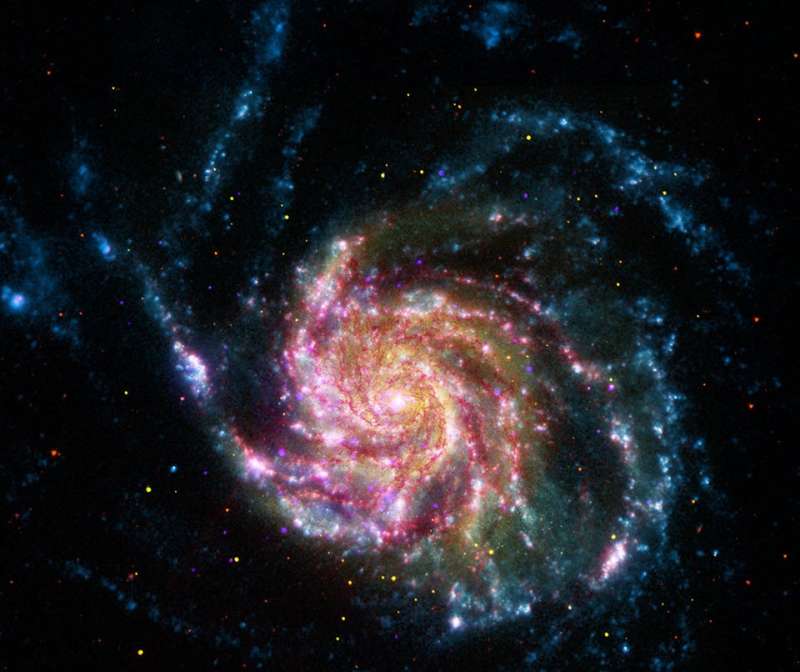Explanation: One of the last entries in Charles Messier's famous catalog, big, beautiful spiral galaxy M101 is definitely not one of the least. About 170,000 light-years across, this galaxy is enormous, almost twice the size of our own Milky Way Galaxy. M101 was also one of the original spiral nebulae observed with Lord Rosse's large 19th century telescope, the Leviathan of Parsontown. In contrast, this mulitwavelength view of the large island universe is a composite of images recorded by space-based telescopes in the 21st century. Color coded From X-rays to infrared wavelengths (high to low energies), the image data was taken from the Chandra X-ray Observatory (purple), the Galaxy Evolution Explorer ( blue), Hubble Space Telescope(yellow), and the Spitzer Space Telescope(red). While the X-ray data trace the location of multimillion degree gas around M101's exploded stars and neutron star and black hole binary star systems, the lower energy data follow the stars and dust that define M101's grand spiral arms. Also known as the Pinwheel Galaxy, M101 lies within the boundaries of the northern constellation Ursa Major, about 25 million light-years away.
1999 2000 2001 2002 2003 2004 2005 2006 2007 2008 2009 2010 2011 2012 2013 2014 2015 2016 2017 2018 2019 2020 2021 2022 2023 2024 2025 |
Yanvar' Fevral' Mart Aprel' Mai Iyun' Iyul' Avgust Sentyabr' Oktyabr' Noyabr' Dekabr' |
NASA Web Site Statements, Warnings, and Disclaimers
NASA Official: Jay Norris. Specific rights apply.
A service of: LHEA at NASA / GSFC
& Michigan Tech. U.
|
Publikacii s klyuchevymi slovami:
Chandra - spiral galaxy - spiral'naya galaktika - galaktika Bulavochnoe Koleso
Publikacii so slovami: Chandra - spiral galaxy - spiral'naya galaktika - galaktika Bulavochnoe Koleso | |
Sm. takzhe:
Vse publikacii na tu zhe temu >> | |
